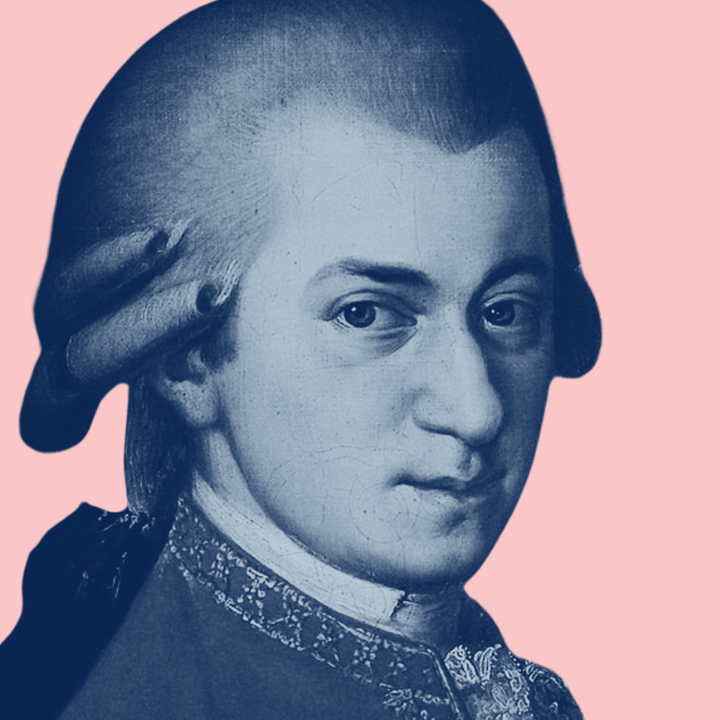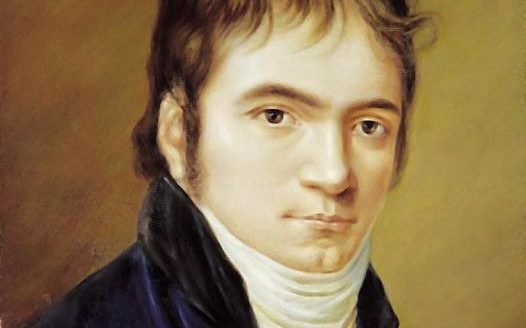
Beethoven Op. 18, No. 5: An Introduction
In the late 18th century, the string quartet emerged as a pinnacle of musical expression for composers. Beethoven, inspired by the masterpieces of Haydn and Mozart, set out to craft his own distinctive voice within the genre. In this post, we introduce Beethoven's String Quartet in A major, Op. 18, No. 5, exploring its historical context and the influences of Mozart. Read more to discover how this remarkable work pays homage to the greats while signaling Beethoven's innovative spirit, setting the stage for his revolutionary contributions to classical music.

Mozart’s Quartet K. 464: Part IV
In the finale of Mozart’s Quartet K. 464, we encounter one of the most remarkable and thrilling finales in his oeuvre. The movement is built around two motifs introduced at the start, which Mozart uses to showcase his contrapuntal skills once again. These seemingly simple motifs become the foundation for a complex contrapuntal display. The development introduces additional motifs, further enriching the texture before presenting a calming chorale theme. The recapitulation incorporates even more motifs, culminating in a coda where Mozart’s contrapuntal mastery shines one last time, before the movement ends in a delicate whisper.

Mozart’s Quartet K. 464: Part III
In the third movement of Mozart’s Quartet K. 464, we are treated to an exquisite theme and variations. Starting with a refined theme, Mozart explores increasingly free variations, evolving from the theme's simplicity into complex counterpoint and music of surprising emotional depth. This movement highlights Mozart’s exceptional craftsmanship and innovation, making it the heart of the entire quartet.

Mozart’s Quartet K. 464: Part II
In the second movement of Mozart’s Quartet K. 464, Mozart opts for a charming minuet instead of the usual slow movement. Uncharacteristically complex for the form, this minuet features two simple motifs that Mozart develops through intricate counterpoint. The minuet combines motifs in a host of ways, creating a rich texture that contrasts with the typical simplicity of the form. The genius of this movement lies in Mozart’s ability to write complex, rich music that sounds clear and effortlessly elegant.

Mozart’s Quartet K. 464: Part I
Discover the elegance of the first movement of Mozart’s K. 464. It showcases Mozart’s mastery of form, clarity of musical thought, and boundless inventiveness in counterpoint.

Mozart’s Quartet K. 464: Introduction
Explore how inspiration shaped Mozart’s String Quartet K. 464, a masterpiece born from his admiration for Joseph Haydn. In this blog, we delve into the story of how Haydn’s groundbreaking Op. 33 Quartets spurred Mozart to create his own set of six quartets, culminating in the elegant and masterful K. 464. This work not only honours Mozart’s friendship with Haydn but also inspired Beethoven, leaving a lasting legacy in the chamber music literature.

Alexander Borodin
Alexander Borodin, born in 1833 in Saint Petersburg, was a renowned doctor and chemist, as well as a notable composer. A member of “The Five,” alongside Balakirev, Cui, Mussorgsky, and Rimsky-Korsakov, he aimed to create a distinctly Russian musical style. His Second Quartet, composed in 1881 and dedicated to his wife Ekaterina Protopopova, is celebrated for its beautiful themes, lively scherzo, and emotionally rich Notturno. The quartet concludes with a vibrant and inventive finale, reflecting Borodin’s unique blend of affection and musical innovation.

Vif et agité
After the exquisitely beautiful slow movement, Ravel thrusts us into a final movement marked vif et agité (lively and agitated). Much of the agitation comes from the unstable 5/8 meter played at a brisk tempo. But there are always lyrical moments where Ravel plays with themes from the first movement that gives a feeling of cohesion to the quartet.

Très lent
The slow movement of Ravel’s String Quartet is an exquisite nocturne that alternates between rhapsodic episodes and a longing melody. Thematic material from previous movements reappear in dream-like guises and the music builds to a passionate climax that sweeps us away. All of this makes for the most beautiful movement of this quartet.

Très Rythmé
Learn about the second movement of Ravel’s String Quartet. It’s a lively movement full of metrical complexity, beautiful melodies and surprising textures.


Ravel’s String Quartet
Learn about Ravel’s life and the story of his beautifully colourful string quartet.

Fantastic finale
Beethoven’s finale to his first published quartet (Op. 18, No. 1) is a thrilling ride that is bursting with musical ideas, exciting contrapuntal passages, and surprises galore. It is a fitting finish to this glorious quartet that shows versatility, humour, surprise, and deep emotion.

Humour and Surprise
The Scherzo of Beethoven’s Op 18, No. 1 is a whirlwind of fast-moving surprises and musical humour. He subverts our expectations with off-beat accents and daring harmony. Learn about the details of this charming movement.

Con Brio: Beethoven’s Second Quartet
This F major quartet (Op. 18, No. 1) is probably the most famous and most beloved quartet of the series of six. It is the longest of the set; the first and last movement being longer than any corresponding movement in the opus. The slow movement has the most emotional range of any other slow movement in the series. And the scherzo is the fastest and most harmonically daring.
It’s an exciting work, so let’s look at some examples from the first movement, marked Allegro con brio (lively with vigour).

Beethoven’s First Quartet
In 1787, at the age of 17, Ludwig van Beethoven left his native Bonn, Germany to travel to the musical epicentre of the world: Vienna. In going there, he had intended to study with Wolfgang Amadeus Mozart. Unfortunately, Beethoven’s Viennese séjour was cut short to only two weeks when he was abruptly called back home because of his mother’s death. Before he could return to Vienna a few years later, Mozart had met his untimely demise.

